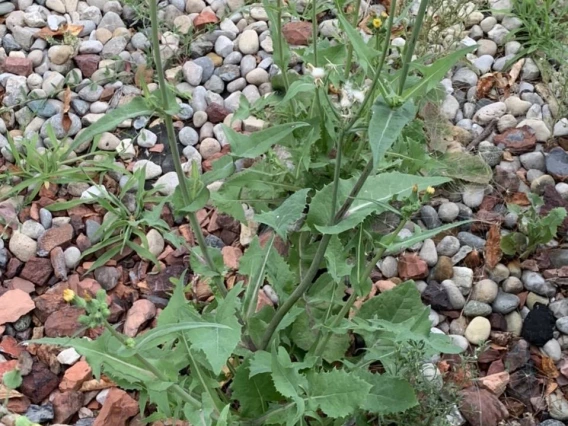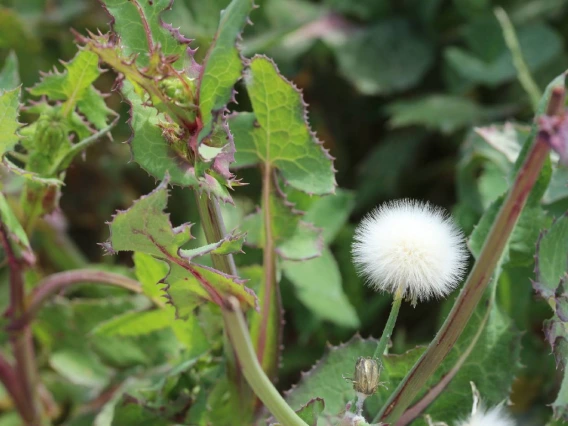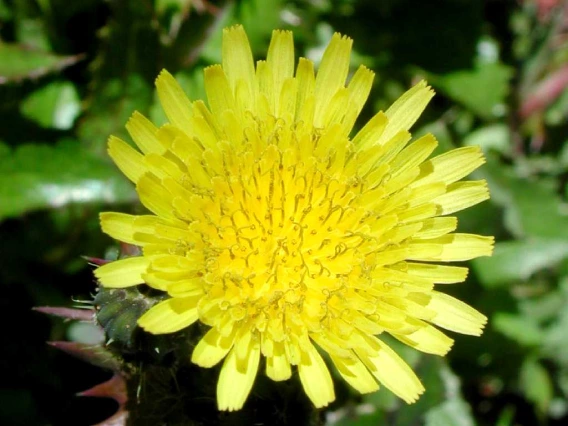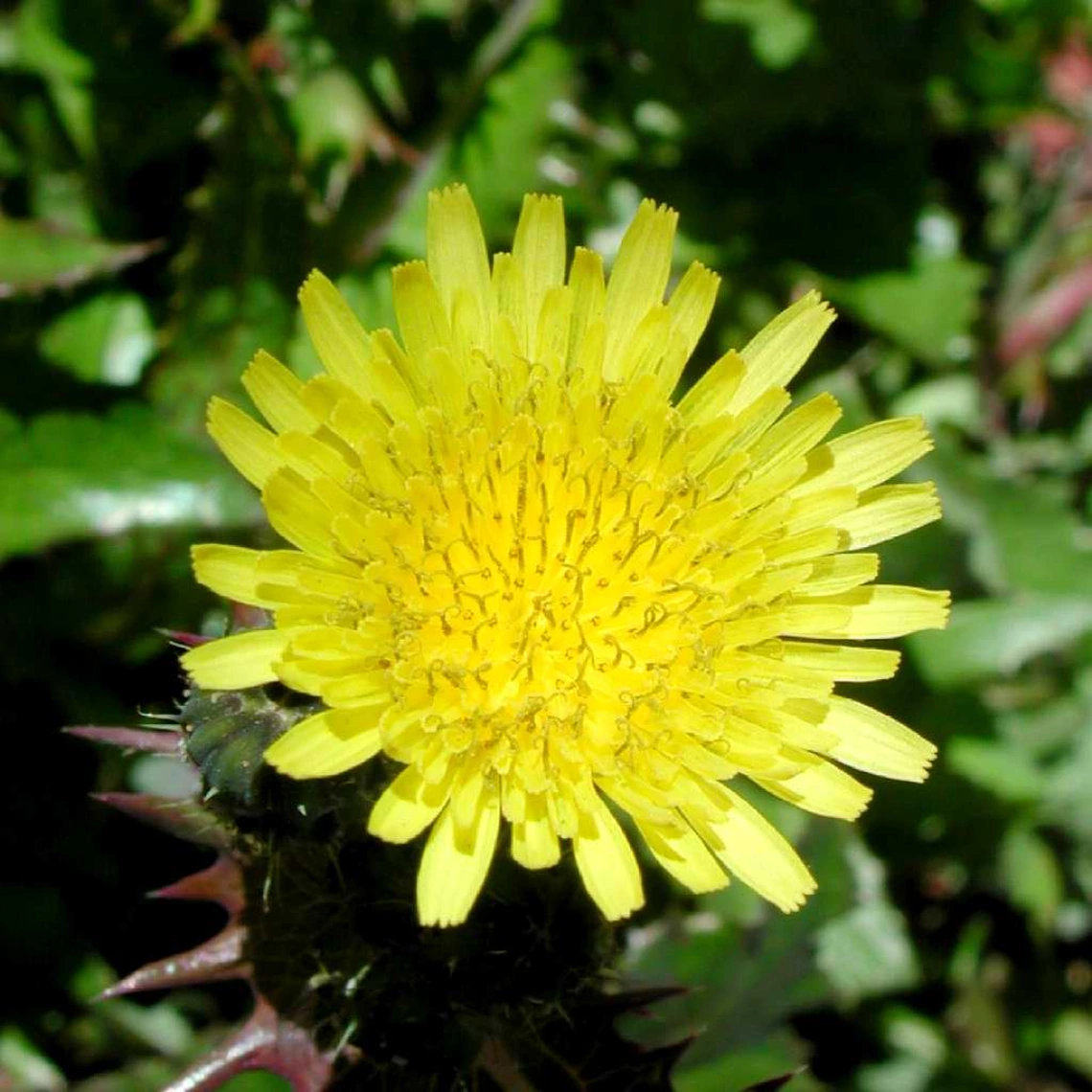Image
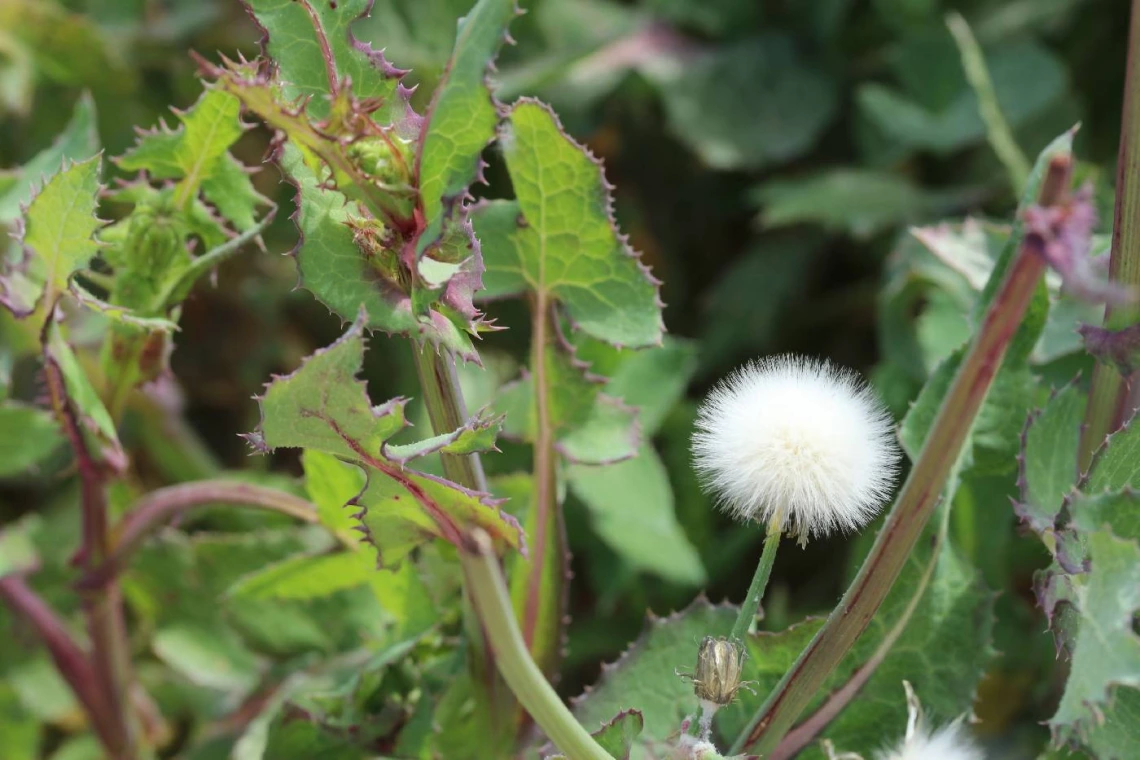
Mendoza
Common Name(s)
Common sowthistle
Smooth sowthistle
Hare’s colwort
Hare’s thistle
Scientific Name
Sonchus oleraceus
Family
Sunflower or Aster family (Asteraceae)
Reasons for concern
Common sowthistle are genetically diverse and adaptable, which causes them to grow quickly, outcompeting important native plants and disrupting agricultural systems. This is especially concerning in our changing climate.
Botanical description
Leaves
powder green to tinged purple, arrow shaped and lobed, 2-11 inches long, ¼ - 6 inches wide, with prickly margins. They grow alternating along the stem, with the larger leaves at the base attached to stalks, and the smaller leaves at the top attached to the stem.
Stem(s)
hollow, upright purplish green, 4 inches-6 ½ feet tall, ooze milky sap when broken, mostly smooth with occasional hairy spikes near the flowers
Flowers
yellow ½-1 inch inflorescence on the tip of the stalk, look very similar to dandelion flowers. Blooms in the springtime
Seeds
fuzzy, white seeds are very light and travel by wind and water dispersal.
Roots
short taproot
Native to
Europe
Where it grows
Commonly found in disturbed areas, , urban areas, gardens and yards, along roadsides, and riparian environments. Tolerant of alkaline soil and partial shade.
Lifecycle
annual or biennial
Reproduction
by seed
Weedy Characteristics
Common sowthistle quickly grow many flowers that contain many lightweight seeds that can travel far distances. The seeds also have low innate dormancy, meaning that most of these seeds will germinate and grow into mature plants. Seeds can germinate in a wide range of conditions.
Look-alike Plants
Common sowthistle can look similar to native daisies. San Pedro Daisy (Lasianthaea podocephala) can be distinguished by its thicker petals and smaller, more oval shaped leaves. Fendler's Desert dandelion (Malacothrix fendleri). Can be distinguished because it grows low to the ground, with most of its leaves concentrated at its base. Smooth Desertdandelion (Malacothrix glabrata) flowers are usually white, and the sparse leaves are thin, thred like, and oblong.
Control Strategies
Common sowthistle can be removed mechanically by hand or using a hand tool. It is the best practice to remove the entirety of the plant, including the roots. Herbicides may also be used.
References
- https://swbiodiversity.org/seinet/taxa/index.php?taxon=Sonchus+oleraceus&formsubmit=Search+Terms
- https://eplanning.blm.gov/public_projects/nepa/50547/63014/68265/DOI-BLM-AZ-P000-2015-0001-EA.pdf
- https://link.springer.com/article/10.1007/s11738-019-2920-z
- http://southwestdesertflora.com/WebsiteFolders/All_Species/Asteraceae/Sonchus%20oleraceus,%20Common%20Sowthistle.html
- https://www.fireflyforest.com/flowers/2385/sonchus-oleraceus-common-sowthistle/

